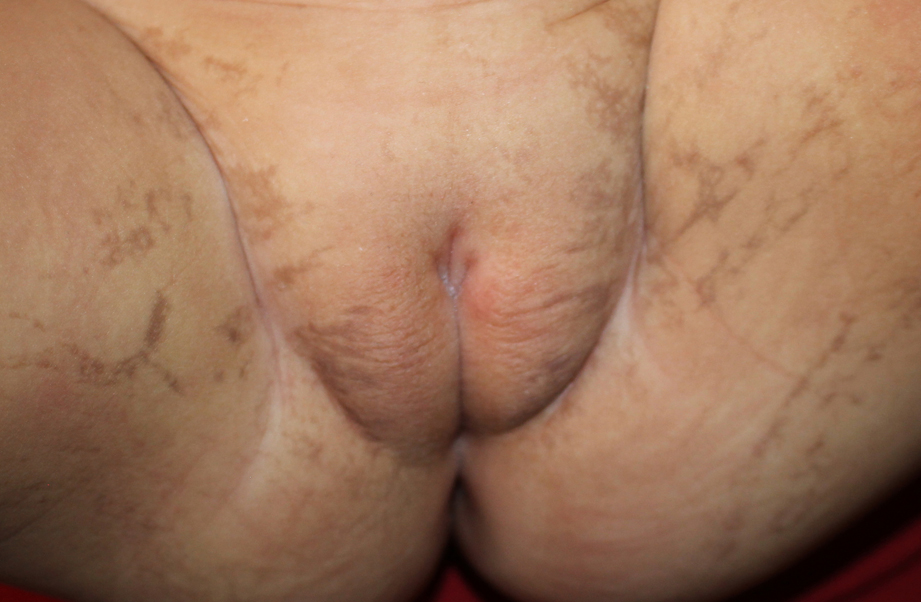Incontinentia pigmenti: a case with an unusual succession of evolutionary stages

Downloads
DOI:
https://doi.org/10.26326/2281-9649.31.2.2244How to Cite
Abstract
Incontinentia pigmenti (IP) is a dominant X-linked inherited skin disorder, lethal in males, unless it is Klinefelter syndrome or more frequently a post-zygotic mosaicism (3). IP is linked in 75.1% of cases (3) to a NEMOdel4-10 mutation. The disease is characterized by lesions distributed along the lines of Blaschko, on a par with numerous other hereditary diseases and nevus conditions. However, it starts with inflammatory vesico-bullous lesions and then the latter are followed by warty, pigmentary and finally hypomelanic-atrophic lesions. These consecutive lesions do not occur always in the same location: warty lesions essentially occur on the back of the hands and feet and pigmentary lesions can arise on previously intact skin. The inflammatory lesions, although almost always present in the initial phase, are the most variable: they can be absent and their absence has been attributed – but not proven – to an early intrauterine phase (5), they can appear for the first time at 18 months (2), or they can also recur in adults (1), especially after intercurrent infections (4).
The actual case did not receive a correct diagnosis at the first examination because it was very atypical for five reasons as follows: late onset at the 3rd month, absence of inflammatory lesions, presence of early hypotrophic linear lesions, presence straight away of hyperpigmented lesions, warty lesions of the proximal limbs and subsequent to the pigmentary ones. We have not found in the literature cases of warty lesions arising after the pigmentary phase and much less of very early hypotrophic lesions.
